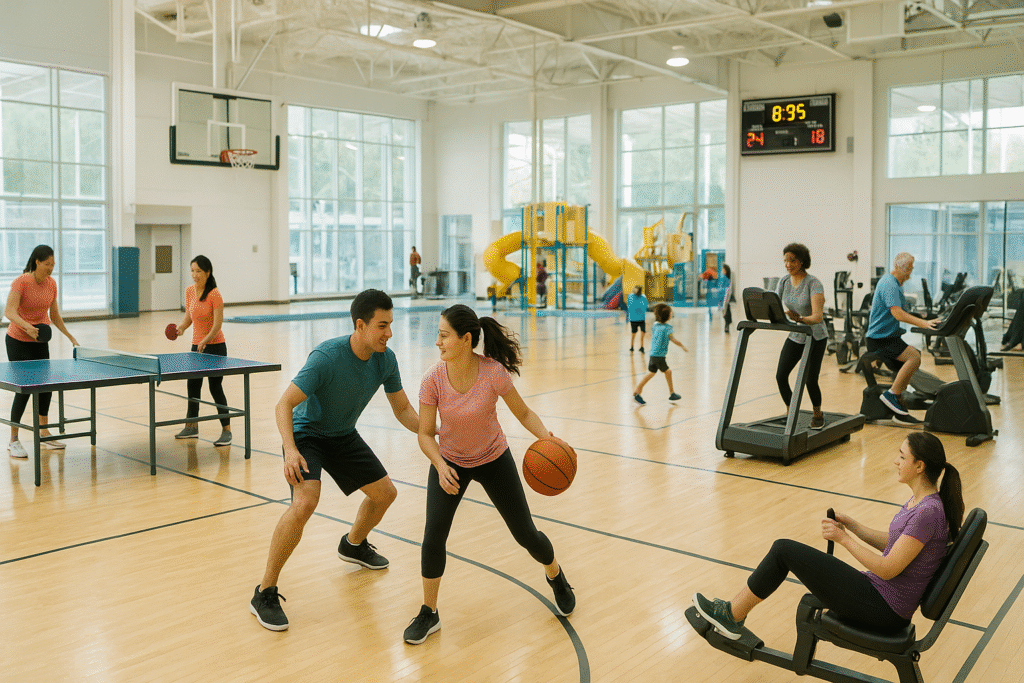When you hear the words recreation center, what comes to mind? For some, it’s a place to shoot loops or swim many stages. For others, it’s about joining a yoga class, attending community events, or simply having a safe space to hang out. Recreation centers are more than just fitness capitals; they’re the twinkle of original communities, blending fun, fitness, and social connections under one roof.
What’s a Recreation Center?
Description and Purpose
A recreation center is a public or private installation designed to offer a blend of fitness, sports, rest, and artistic conditioning for individuals and families. Suppose it is a one-stop destination for both relaxation and exertion.
How Recreation Centers Differ from Gymnasiums or Clubs
Unlike standard gymnasiums that concentrate substantially on exercises, recreation centers are broader in scope. They host sporting events, family conditioning, artistic programs, and educational shops, making them more community-driven.
History and elaboration of Recreation Centers
Early Community Centers
Recreation centers started out as simple community halls where neighbors gathered for events or small sports conditioning.
ultramodern- Day Recreation installations
Fast forward to the moment, and recreation centers boast state-of-the-art fitness gymnasiums, indoor pools, advanced courts, and indeed digital game zones.
Crucial Features of a Recreation Center
Sports installations
Basketball courts, tennis courts, and multipurpose fields are masses in the utmost centers.
Fitness and Wellness Areas
From toning sections to cardio machines, heartiness apartments, and contemplation spaces, fitness is at the core.
Swimming Pools and Submarine Centers
Stage pools, kiddies’ splash zones, and aqua fitness areas make water conditioning accessible to all ages.
Community Halls and Event Spaces
Perfect for artistic carnivals, shops, or birthday parties.
Outdoor Playgrounds and premises
Numerous centers extend outside with jogging tracks, open fields, and safe playgrounds for children.
Types of Recreation Centers
Public Recreation Centers
Funded by original governments, these are frequently budget-friendly and community-centered.
Private or Class- Grounded Centers
Exclusive installations with decoration services like gyms, advanced gymnasiums, and personal coaches.
University and School- Grounded Recreation Centers
Designed for scholars but frequently open to the community too.
Specialized Centers
From elderly exertion centers to youth-concentrated capitals, some installations target specific age groups.
Benefits of Recreation Centers
Physical Health Benefits
Regular exercise, sports, and swimming help ameliorate overall health.
Mental and Emotional Well-Being
Engaging in rest and fitness reduces stress and boosts mood.
Social Connections and Community Building
Meeting new people and erecting gemütlichkeit is a natural part of recreation centers.
Family Bonding openings
Parents and kiddies can share in common conditioning, strengthening connections.
Popular Conditioning in Recreation Centers
Inner Sports
Basketball, volleyball, and badminton are the top sports.
Fitness Classes
Zumba, calisthenics, yoga — group exercises keep the effects delightful.
Swimming and Water Calisthenics
Perfect for cardio and common-friendly exercise.
Trades, Crafts, and Cultural Programs
Workshops allow people to express creativity while learning new chops.
Youth and Senior Programs
From after-school sports for kiddies to tai chi for seniors, there’s something for everyone.
Why Recreation Centers Are Important for Communities
Recreation centers provide safe surroundings for youth, reduce crime rates, and encourage healthier cultures. They bring people together, strengthen neighborhoods, and promote inclusivity.
Designing a Modern Recreation Center
Sustainable and Eco-Friendly Designs
Green structures, solar-powered installations, and eco-conscious designs are the future.
Technology Integration
Smart gymnasiums, fitness shadowing apps, and virtual classes are getting standard.
Availability for All
Inclusive designs ensure that seniors, children, and people with disabilities can share equally.
Challenges Faced by Recreation Centers
While recreation centers bring innumerable benefits, they face challenges like limited budgets, outdated installations, and staffing dearths. Conforming to ultramodern demands while staying affordable is a balancing act.
How to Choose the Right Recreation Center
Before subscribing, check the position, available programs, class costs, and whether it fits your family’s life.
The Future of Recreation Centers
The coming generation of recreation centers will combine physical spaces with digital platforms, offering virtual classes, AI-grounded fitness coaching, and expanded healthiness programs.
Conclusion
Recreation centers are more than structures — they’re lifelines for communities. They promote health, connection, and joy, offering comfort for every age and life. Whether you’re chasing fitness pretensions, looking for family fun, or pining for a sense of belonging, a recreation center might just be your alternate home.
FAQs
1. What’s the purpose of a recreation center?
A recreation center offers spaces for fitness, sports, artistic, and rest conditioning, promoting community well-being.
2. Do I need a class for all recreation centers?
Not always. Public centers are frequently open with low fees, while private ones charge enrollment fees.
3. What conditioning can kiddies enjoy in a recreation center?
Kiddies can join sports leagues, swimming assignments, trades and crafts programs, and youth camps.
4. Are recreation centers good for seniors?
Yes, numerous offer elderly programs like yoga, walking clubs, and social conditioning acclimatized for older adults.
5. How do recreation centers profit communities?
They encourage healthier lifestyles, create safe spaces, reduce stress, and strengthen community ties.
